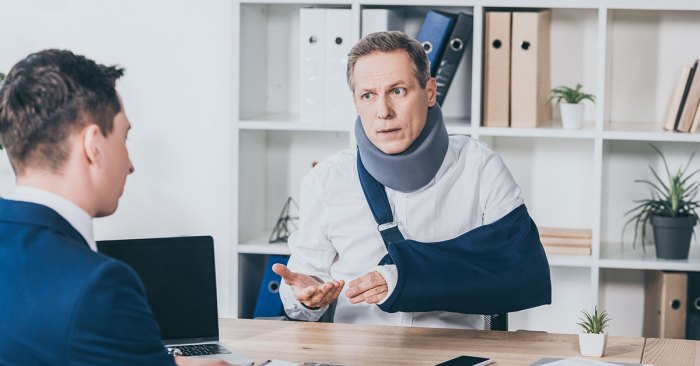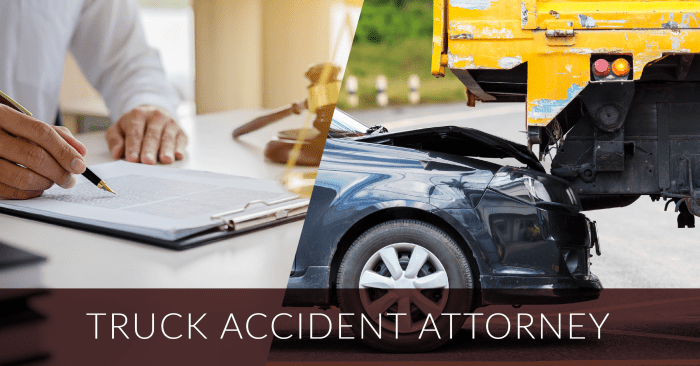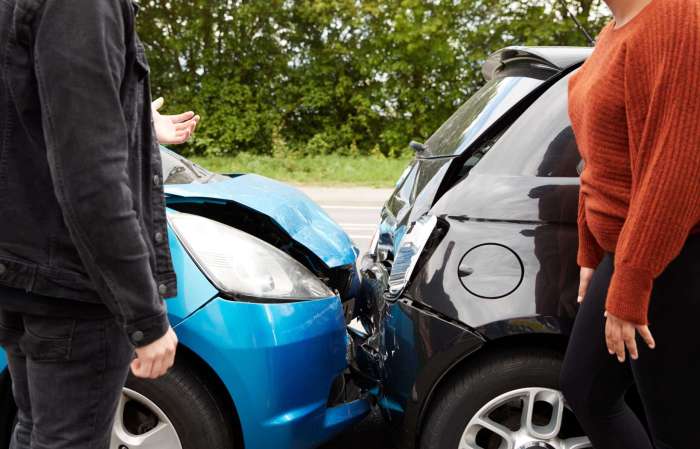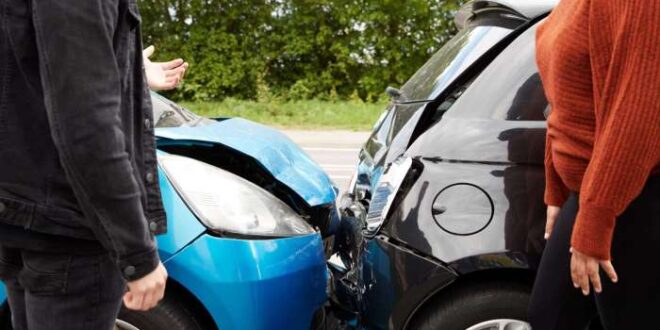When accidents strike, the complexities of the legal system can be overwhelming. Enter the accident law attorney, your trusted guide through the maze of insurance policies, liability determinations, and damage claims. With expertise and compassion, they empower you to seek justice and rebuild your life.
As we delve into the intricacies of accident law, you’ll gain invaluable insights into case assessment, liability determination, damages and compensation, negotiation and settlement, and trial preparation. Whether you’re seeking compensation for injuries or navigating the complexities of insurance disputes, this comprehensive guide equips you with the knowledge and support you need to protect your rights.
Case Assessment and Evaluation
When you’ve been involved in an accident, it’s important to understand the process of evaluating your case. This involves gathering information, assessing liability, and determining the potential value of your claim.
The first step in evaluating an accident case is to gather as much information as possible. This includes obtaining a copy of the police report, taking photographs of the accident scene, and getting contact information from any witnesses. You should also keep a record of your medical expenses, lost wages, and other damages you have suffered as a result of the accident.
Once you have gathered all of the relevant information, you can begin to assess liability. This involves determining who was at fault for the accident. In most cases, liability is based on negligence. Negligence is the failure to act as a reasonable person would under the same circumstances.
If you can prove that the other driver was negligent, you may be entitled to compensation for your damages. The amount of compensation you can recover will depend on the severity of your injuries, the extent of your damages, and the liability of the other driver.
Evidence Collection and Documentation
Evidence collection and documentation are crucial for a successful accident case. The more evidence you have to support your claim, the more likely you are to recover compensation for your damages.
- Police report: The police report is an important piece of evidence in an accident case. It contains information about the accident, including the date, time, and location of the accident, the names and contact information of the drivers involved, and the officer’s observations about the accident.
- Photographs: Photographs of the accident scene can help to show the extent of the damage to your vehicle and the injuries you sustained. They can also help to establish liability by showing how the accident happened.
- Witness statements: Witness statements can provide valuable information about the accident. Witnesses can testify about what they saw and heard, and they can help to establish liability by providing an independent account of the events leading up to the accident.
- Medical records: Medical records can document the extent of your injuries and the treatment you have received. They can also help to establish liability by showing that your injuries were caused by the accident.
Liability Determination
In accident law, liability determination plays a pivotal role in establishing who is responsible for the damages caused by an accident. Negligence, a crucial concept in this context, forms the cornerstone of liability assessment.
Negligence and Its Role
Negligence is the failure to exercise reasonable care, resulting in harm or injury to another person or their property. To prove negligence, several elements must be established:
- Duty of care:A legal obligation exists between the parties involved, requiring one party to act with reasonable care towards the other.
- Breach of duty:The party owing the duty of care fails to act reasonably, leading to a breach of that duty.
- Causation:The breach of duty must be the direct and proximate cause of the plaintiff’s injuries or damages.
- Damages:The plaintiff must have suffered actual harm or loss as a result of the defendant’s negligence.
Evidence for Liability
Establishing liability in accident cases often involves gathering and presenting various types of evidence, including:
- Witness statements:Accounts from individuals who witnessed the accident provide valuable insights into the events leading up to and during the incident.
- Physical evidence:Physical objects such as vehicles, skid marks, or debris can help reconstruct the accident and determine liability.
- Expert testimony:Experts in fields like accident reconstruction or medical analysis can provide specialized knowledge and opinions to support liability claims.
- Police reports:Official reports prepared by law enforcement agencies often contain valuable information about the accident and the parties involved.
Comparative Negligence
Comparative negligence is a legal doctrine that apportions fault among multiple parties involved in an accident. In such cases, the plaintiff’s recovery may be reduced in proportion to their own degree of fault.
For instance, if a plaintiff is found to be 20% negligent in causing the accident, their compensation from the defendant may be reduced by 20%.
Damages and Compensation: Accident Law Attorney

After determining liability, the next step in an accident case is to assess damages and determine appropriate compensation for the victim’s losses. Damages can be broadly categorized into two types: economic and non-economic.
Economic Damages
- Medical expenses: Past, present, and future costs of medical treatment, including hospital stays, surgeries, medication, and rehabilitation.
- Lost wages: Income lost due to the accident, including missed workdays, reduced earning capacity, and future lost earnings.
- Property damage: Repairs or replacement costs for damaged vehicles, personal belongings, or property.
Non-Economic Damages
- Pain and suffering: Physical and emotional distress caused by the accident, including pain, discomfort, and emotional trauma.
- Loss of enjoyment of life: Inability to engage in activities or hobbies due to injuries sustained in the accident.
- Disfigurement: Permanent physical scarring or alterations that affect a person’s appearance or self-esteem.
Calculating damages involves considering various factors, such as the severity of injuries, medical prognosis, lost income, and the impact on the victim’s quality of life. Legal professionals use specific formulas and guidelines to determine a fair and reasonable amount of compensation.
Negotiation and Settlement

Negotiating a settlement in an accident case involves reaching an agreement with the at-fault party’s insurance company to compensate the victim for their losses. The attorney plays a crucial role in these negotiations by representing the victim’s interests and ensuring a fair settlement.
Negotiations typically begin with the victim’s attorney submitting a demand letter outlining the damages and compensation being sought. The insurance company will then respond with an offer, which may be lower than the demand. Back-and-forth negotiations continue until both parties reach an agreement.
Advantages of Settling an Accident Case
- Quicker resolution:Settling can resolve the case faster than going to trial.
- Less stress:Avoiding the uncertainty and stress of a trial can be beneficial.
- Guaranteed compensation:A settlement provides a guaranteed amount of compensation, unlike a trial verdict.
Disadvantages of Settling an Accident Case, Accident law attorney
- Lower compensation:Settlements often result in lower compensation than a potential trial verdict.
- Waiver of future claims:Settling typically involves waiving the right to pursue future claims related to the accident.
- Admission of fault:Accepting a settlement may imply some level of fault on the victim’s part.
Trial Preparation and Litigation
Preparing for trial in an accident case involves several critical steps. First, the attorney must gather all relevant evidence, including medical records, police reports, and witness statements. They will also interview the client thoroughly to understand the facts of the case and develop a legal strategy.
Experts and Witnesses
Experts, such as medical professionals and accident reconstructionists, can provide valuable testimony to support the client’s case. Witnesses, such as eyewitnesses and first responders, can provide firsthand accounts of the accident. The attorney will work closely with these individuals to prepare them for trial.
Presenting Evidence and Cross-Examination
During trial, the attorney will present evidence to support their client’s case. This may include documents, photographs, and expert testimony. The attorney will also cross-examine the other side’s witnesses to challenge their credibility and the accuracy of their testimony.
Conclusive Thoughts

Remember, in the aftermath of an accident, you are not alone. Accident law attorneys are dedicated to advocating for your interests, ensuring that you receive fair and just compensation. Their expertise extends beyond legal knowledge; they provide emotional support and guidance, helping you navigate the challenges of recovery and rebuilding.
If you or a loved one has been involved in an accident, don’t hesitate to reach out to an experienced accident law attorney. Their knowledge, compassion, and unwavering commitment to justice will make all the difference in your journey toward recovery.
FAQ Overview
What is the role of an accident law attorney?
Accident law attorneys represent individuals who have been injured or wronged in accidents. They provide legal advice, negotiate with insurance companies, and represent clients in court to ensure they receive fair compensation for their injuries and damages.
How do I choose the right accident law attorney?
When choosing an accident law attorney, consider their experience, reputation, and communication style. Look for an attorney who has successfully handled cases similar to yours and who you feel comfortable working with.
What are the common types of damages in accident cases?
Common types of damages in accident cases include medical expenses, lost wages, pain and suffering, and property damage. The specific damages you may be entitled to will depend on the nature and severity of your injuries.
What is the process of filing an accident claim?
The process of filing an accident claim typically involves gathering evidence, documenting your injuries, and negotiating with the insurance company. An accident law attorney can guide you through this process and help you maximize your recovery.
 Nenroll Nenroll News
Nenroll Nenroll News
